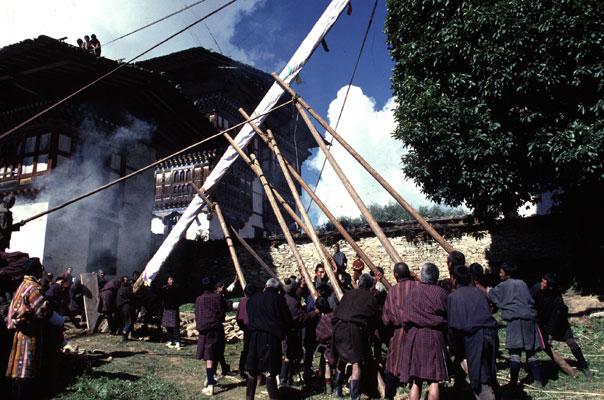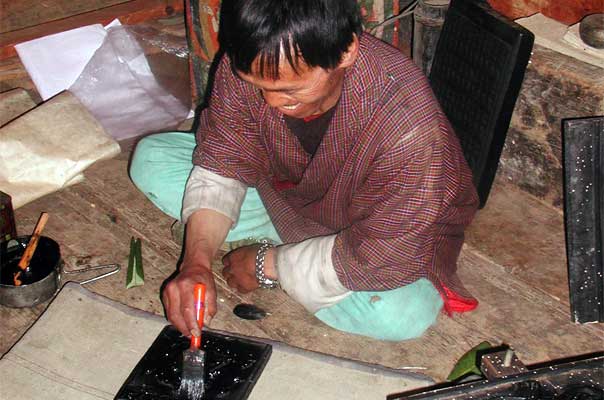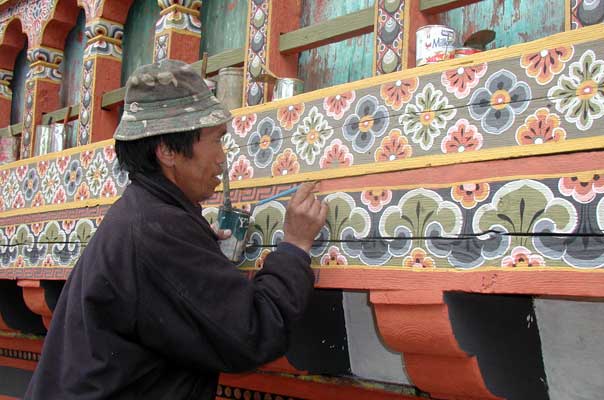Because of its association with the great Tibetan masters; Longchen Rabjam and Dorji Lingpa the Ogyen Choling estate is of considerable importance for Bhutan as well as for the Tibetan Buddhist world.
The estate provides an excellent insight into the lifestyles and living conditions of a typical landed family over the last century. The heirs of Ogyen Choling decided to convert parts of their ancestral home to a museum. This decision was made with the hope of sharing this heritage with as many people as possible and at the same time to preserve and maintain Ogyen Choling as a religious and cultural center. The museum was formally opened in May 2001. A trust fund was established in the same year with the objectives:
- To ensure the long term maintenance of the buildings, the temples and the museum
- To sustain the traditional religious observances and rituals
- To provide a place for religious studies, research and solitude
- To revive and enhance traditional skills and provide an outlet/market for local handicrafts
- To provide financial support to deserving but economically deprived students in Tang valley
Traditional living quarters, store rooms, granaries and other rooms have been recreated to capture the ‘near realistic’ ambience of the lifestyles and living conditions of households of the religious nobility during the 19th and 20th century.
Utilitarian everyday utensils, tools and implements as well as examples of artistic expressions through artworks and crafts form part of the exhibition. Wherever appropriate, narratives are provided to give some background information on specific topics and artifacts.
Conscious efforts were made to maintain the original content and form of the rooms. After many years of disuse the floors had to be cleaned and some of the walls had to be repaired and repainted keeping it as close as possible to the original paintings. The grain stores have been kept in the way they were used in the past. Some of them are still in use today. Glass window panes were added in most of the rooms so that the wooden window shutters could be opened. The glass windows brought in light and at the same time reduced dust and stopped the birds from entering the rooms. Artificial lighting is provided in the inner rooms only. In some of the rooms natural light is adequate for viewing the displays. But the visitors should be advised that the best viewing time with natural light is from 9 am to about 2 pm.




